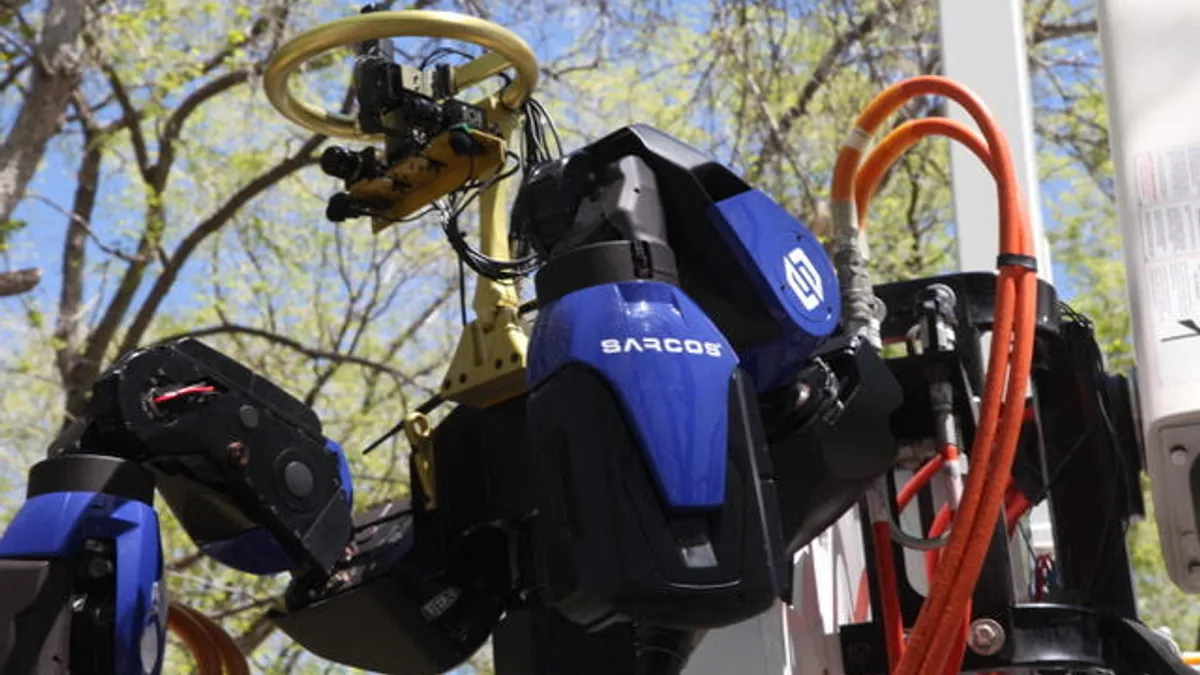Dive Brief:
- Powered exoskeleton maker Sarcos Robotics announced a technology partnership with T-Mobile to leverage the telecommunication giant’s 5G network for Sarcos' upper torso Guardian XT robots.
- The technology will make it easier for on-site professionals to pilot the robots using AR/VR technology, while letting off-site observers monitor jobs remotely. The technology will also help with operator movement and performance of the robot, according to the announcement. A second planned phase of development will allow operation of the robot from a distance, increasing operator safety.
- The technology is expected to be released for commercial purchase in late 2022. A Sarcos investor report lists the leasing prices at $5K per month for the Guardian XT model.
Dive Insight:
Fresh off the heels of announcing a $496 million public offering, Sarcos is plunging into the robotic-assistance market and bills its robots as having uses in construction, as well as the larger workforce, by reducing the risk of worker injury through dangerous situations or repetitive, laborious tasks.
Next generation 5G cellular networks, which improve signal dependability while cutting down on latency and lag time, have been lauded for their potential to assist in everything from remote telemedicine surgeries to safely operating giant earth-moving equipment.
The firms touted the ability of 5G to help Sarcos' robots improve in function and task delivery.
"This is a significant first step and we're eager to continue the development toward full 5G wireless connectivity that will unlock a variety of new capabilities, including remote teleoperation, as we prepare for commercial availability," said Scott Hopper, executive vice president of corporate and business development at Sarcos.
Sarcos also offers a full-body robotic exoskeleton, the Guardian XO, that operators wear in order to reduce wear and tear on their frames and aid them in physically strenuous tasks, such as lifting heavy objects or engaging in dangerous activities.
The leasing price for the full-body exoskeletons are almost twice as expensive as the remote model, at around $9K per month, according to the investor report. The robots are geared towards helping workers on jobsites, rather than taking their jobs.
Robotic labor is not a new concept, but its use is still in its infancy. In 2018, the National Institute of Advanced Industrial Science and Technology, one of the largest public research organizations in Japan, developed the HRP-5P Prototype, an autonomous learning robot that could be trained to perform simple tasks. The prototype is capable of heavy labor, and featured technology from Honda, Inc.
Despite Sarcos's promise of commercial availability in 2022, robots still may be far from replacing workers on construction sites.
Reza Akhavian, assistant professor of civil and construction engineering at San Diego State University, told Construction Dive in April that the idea of robots replacing humans en masse on jobsites were "staples of science fiction and cartoons."
"Currently and for the foreseeable future, the field of robotics in general, and construction robotics in particular, are not even close to a state in which robots can replace human workers," Akhavian said.
But for T-Mobile and Sarcos, that future just got a little bit closer.












